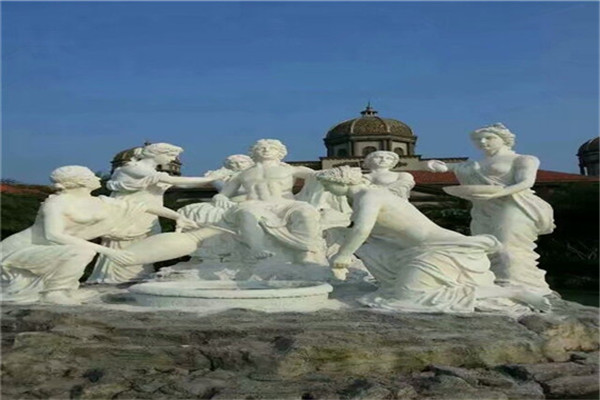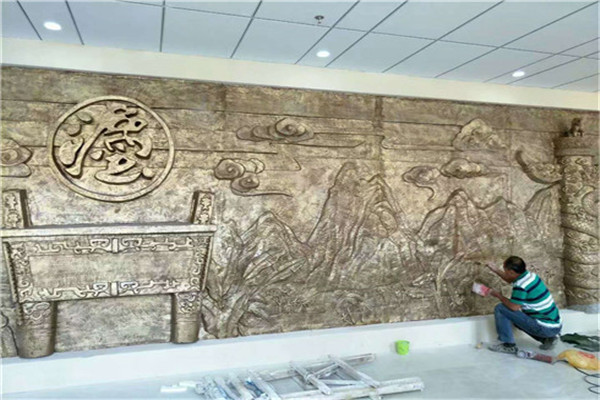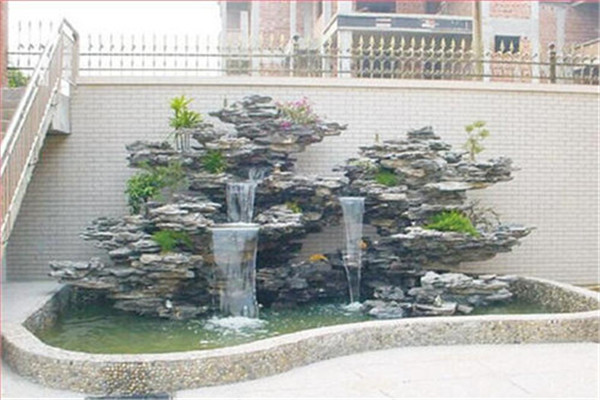
Relief is a kind of sculpture. The sculptor carves the image he wants to shape on a flat plate, making it separate from the plane of the original material. Relief is the product of the combination of sculpture and painting. It deals with objects in a compressed way, and displays three-dimensional space by perspective and other factors. It is only for one side or two sides to see. The reliefs are usually attached to another plane, so they are used more in architecture and can be seen on utensils and implements. Due to its compression characteristics, it occupies less space, so it is suitable for decoration in a variety of environments. In recent years, it has played an increasingly important role in urban beautification. The relief is as rich and colorful as the round sculpture in content, form and material. The materials of relief include stone, wood, ivory and metal. The relief is a semi vertical sculpture whose image shape protrudes from the stone surface (as opposed to the relief). It can be divided into light relief and high relief according to the depth of stone removal in image modeling. The bas reliefs are single level statues with relatively simple contents; The high relief is a multi-level statue with complicated contents. The carving technique and expression style of relief are basically the same as those of round sculpture. Many ancient and modern large-scale memorial buildings, high-end mansions and private houses are equipped with such decorations. Their main works are wall blocks, flower windows, dragon columns (early) and column bases.

Stone carvings pay attention to lifelike shapes, round and delicate techniques, and smooth and free patterns. Its traditional skills began in the Han Dynasty, matured in the Wei and Jin Dynasties, and became popular in the Tang Dynasty. There are mainly garden sculpture, architectural sculpture, sculpture, stone carving handicrafts, and hundreds of products: marble mantelpiece, figure sculpture, relief, abstract sculpture, fountain, flower pot Chengdu GRC component Roman columns, railings, pavilions, busts, door covers, stone benches, bathtubs, animal sculptures, tombstones, antique sculptures, etc. Stone carvings have a long history. They pay attention to lifelike shapes, round and delicate techniques, and smooth and free patterns. Carving products mainly include figures, animals, fireplaces, flower pots, balustrades, fountains, reliefs, dragon pavilions, dragon pillars, jade pavilions, birds and animals, and various high-quality sculptures. It not only has the charm of ancient art, but also has the elegant and fast modern art style. It enjoys the reputation of "excellent workmanship" and "groundbreaking" at home and abroad. high quality GRC component It is a collection of creative, design, production of various works of art. In short, it is a work of art carved from stone.

Most of the jades mentioned in daily life refer to nephrite, and there are many kinds of nephrite products. Generally, they refer to white sheepskin jade, white jade, topaz, purple jade, black jade, jasper, sapphire, ruby and northeast Xiuyu produced in Xinjiang. In the jade carving, the white jade with sheepskin is fine in texture and strong in luster, as white as sheepskin, which can be called "the king of nephrite" and "the crown of white jade". In addition, Nanyang jade, Lantian jade, Hotan jade, agate, crystal, coral, turquoise, lapis lazuli, etc., all belong to the category of nephrite. Later, due to the opening of the Silk Road, the jade produced in Hotan, Xinjiang, was unanimously recognized and began to play a leading role in the processing of royal, official and folk jade. Nephrite gradually evolved into a synonym for hotan jade.

Lacquer carving is a traditional handicraft in China, also called red carving. Its technique began in the Tang Dynasty, and its process is extremely complex. Paint, tire The process of polishing and polishing is complicated and takes a long time, so large lacquer carvings are also extremely expensive and have always been the furnishings of royal families and nobles in ancient times. Lacquer carving is a technique to carve patterns on stacked flat lacquer bodies. It was introduced into Beijing during the Yuan and Ming Dynasties. Through the painstaking research of lacquer carving artists, the lacquer carving technique has gradually become perfect and mature, and lacquerware has become a handicraft with Beijing characteristics. Beijing lacquer carving is as famous as Hunan Hunan embroidery and Jiangxi Jingdezhen porcelain. It has been known as the "Three Masters of Chinese Arts and Crafts". For many years, lacquer carving has been favored by lacquer carving art lovers at home and abroad for its unique craft, exquisite and beautiful shape without losing a sense of solemnity.




